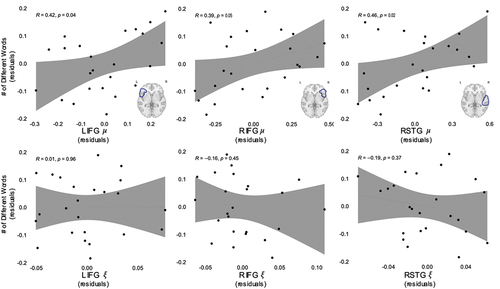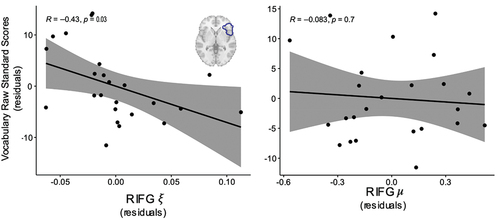Figures & data
Table 1. Demographic information for the current sample across levels of Maternal Education. In addition to measures of age, ethnicity, and race, the current study collected four additional measures of the home environment: 1) Quality of Neighborhood: on a scale of 1–5, parents rated their satisfaction with their neighborhood, local schools, safety, amenities, and home. 2) Number of Books in the home. 3) The number of social services utilized out of the following list: income tax credit, SNAP, WIC, government housing, school lunch, and welfare cash. 4) Generational Experiences: on a scale of 1–4, parents rated whether they had stable finances, food to eat, a stable caregiver, and grew up in a safe neighborhood during their own childhood. Children also completed the CTOPP as a measure of their phonological processing.
Figure 1. Regions included in the current analysis: inferior frontal gyrus (IFG), superior temporal gyrus (STG), and superior marginal gyrus (SMG). a) ROIs mapped on a single subject’s T1 scan alongside their corresponding whole brain b) stiffness map and c) damping ratio map. Stiffness and damping ratio were extracted for each unilateral ROI.

Figure 2. Number of different words spoken by mothers is positively associated with stiffness (µ) in the LIFG, RIFG, and RSTG gyrus. Damping ratio () of the same regions was not associated with maternal language input. All values plotted are residuals from partial correlations accounting for age, maternal education, and the number of utterances produced by both the child and adult.

Figure 3. Damping ratio () in the RIFG is negatively associated with child vocabulary outcomes when controlling for age and maternal education. Stiffness (µ) was not associated with child vocabulary outcomes. All values plotted are residuals from partial correlations accounting for age and maternal education.

Supplemental Material
Download MS Word (17.8 KB)Data Availability Statement
Data and analysis scripts are publicly available at: https://github.com/juliagoolia28/manuscripts/blob/master/mre_vocab/readme.md
